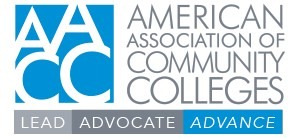Preparing students effectively for rewarding careers is the mission of community colleges, but is also the goal for policymakers, businesses, and other community stakeholders. AACC has found that apprenticeship programs address the skills gap because they immediately place workers in unfilled jobs, and the companies offering the apprenticeships can adjust their training to fit current organizational needs. As an administrator it is important to be involved and bridge relationships with your state and federal office of apprenticeship.
Through the ECCA initiative, AACC has supported states that are recognizing and using apprenticeships to help build a qualified workforce to meet industry needs. Apprenticeships, as a policy approach, involve many stakeholders and government agencies that coordinate and implement these programs. Stakeholders, depending on the state, may include the state’s labor department, the state’s department of education, community and technical colleges, high schools, and industry. AACC recognizes that policy approaches vary depending on the goal of the state, and what the state already has in place, having strong examples and data to work with legislatures will help to demonstrate ways to provide incentives to participants and employers to mutually participate in these programs. Between 2016 and 2018, 30 states passed 60 new apprenticeship laws. About half the laws enacted during this time established new apprenticeship programs or created new requirements for existing programs.
On the federal level, apprenticeships receive bipartisan support. Both the Obama and Trump administrations invested in many apprenticeship programs, incentivizing states to expand registered apprenticeships across the nation. Funding for registered apprenticeship programs from the Department of Labor is allocated through WIOA. Through the ECCA initiative, AACC has assisted in the support and the collaboration of colleges working with their state and local WIOA system, to support workforce development in several ways, including education, training services, and job search activities. Community colleges are leaders in workforce education; it is imperative for them to be at the table and to be involved, and to serve on the local workforce board.
Other Resources
The State of Apprenticeships among Workforce Boards (Jobs for the Future)
Advancing Apprenticeship as a Workforce Strategy: An assessment and Planning Tool for the Public Workforce System (Apprenticeship USA)
Registered Apprenticeship 101 Bootcamp: Registered Apprenticeship and the Public Workforce System (Workforce GPS)
